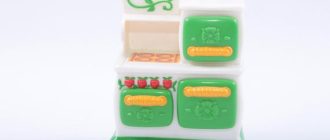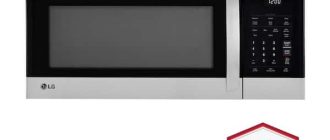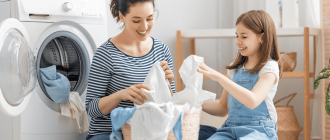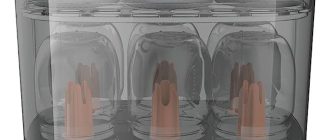How to Dispose of Old Appliances
All consumers should be educated on how to dispose of old appliances in a legal, eco-friendly and proper way.
Appliances often carry chemicals that are harmful to the environment and can cause major pollution if allowed to leak into soil and water resources.
Things you need to know about recycling appliances:
- Harmful chemicals, such as CFCs, HCFCs, HFCs, and mercury, can poison our atmosphere and landfills
- Refrigerators, air conditioners, and freezers made before 1995 contain chlorofluorocarbons (CFCs)
- Refrigerators, freezers, and some air conditioners manufactured since 1995 contain hydro fluorocarbons (HFCs), which are not ozone-depleters, but still require proper disposal
- Hazardous materials contained in other home appliances include oil, polychlorinated biphenyls (PCBs), and mercury; all chemicals that are have harmful to air, water, and soil if not disposed of properly
- Plastic, steel, glass, refrigerant, oil, and blowing agent contained in old appliances can be recovered and recycled for use in new products
- Recycling saves energy. Reprocessing existing materials to create new products uses less energy than making products from brand new materials.
- Most appliances are 75 percent steel. The Steel Recycling Institute saves the equivalent of 18 million households worth of electric energy every year by recycling steel.
- Nearly 84 percent of home appliances in the US are being properly recycled since state and municipal disposal bans have become effective
Things you can do about recycling appliances:
- Donate your old appliances to an organization. If the appliance you are replacing is in good shape and works well, consider donating to a charity like Habitat for Humanity, Goodwill, or the Salvation Army.
- Offer your appliance on Craigslist or Freecycle to people who are willing to come and pick it up from you.
- When your new appliance is delivered, many stores offer the option of picking up the old appliance from you. Make sure to ask whether they participate in an appliance recycling program because you don’t want them sending it to the landfill.
- Take your old appliance to your local recycling center.
- Check the rules and regulations regarding appliance recycling in your local municipality. Two good resources are the National Recycling Coalition’s State Recycling Resources or the Association of State and Territorial Solid Waste Management Office’s (ASTSWMO) State Agency Waste Management Program Links.
- Find out if your city or town may has an appliance round-up day or a location where you can drop off used appliances.
- Check out Earth 911’s directory for a list of companies and recycling facilities that accept “Non-Reusable Large Appliances” in your area.
- Visit Steel Recycling Institute’s recycling locator to find an appliance recycling facility near you.
- For detailed information visit the US Environmental Protection Agency (EPA) or contact the Stratospheric Ozone Hotline at 1-800-296-1996.
Things to know about home appliances and energy use
- Use Energy-Saving Appliances. You can reduce the energy and water usage (as well as save money) in your kitchen considerably by using ENERGY STAR appliances. Start with your refrigerator, the biggest power user in your home – make sure it has an Energy Star rating.
- Use compact fluorescent or LED bulbs for your kitchen light fixtures. Compared to standard bulbs, they last much longer (5-20x) and use 25% or less electricity.
- Don’t throw out kitchen food scraps, but learn to compost. You will be saving landfill space and making rich potting soil for your indoor plants or your outdoor garden space.
- Change your habits by learning to recycle and reuse everything that you can. Try not to get plastic bags every time you go grocery shopping, but remember to take durable bags with you when you leave the house.
- Fill your dishwasher as fully as you can, without overloading, because fewer loads save money and energy for us all. Also, remember not to pre-rinse your dishes. Wash your dishes in the sink only if they cannot be washed in the dishwasher because your dishwasher uses less water and energy than you do.
- Fix your appliances whenever you can and save the landfills. Parts, accessories, repair help info, repair videos, maintenance information and more!
- Choose your cookware carefully – this is important for taste and safety. Quality of the pots makes a difference, as does their care, and choosing the right pot for the right cooking job. A cast iron skillet might be perfect for browning fish, but is not the best to use when cooking acidic foods.
- Use natural cleaning ingredients – salt is excellent for cleaning pots and pans. To clean burned saucepans, fill the pan with water, add baking soda, let it soak overnight, then bring to a boil the next day. You pots will be sparkly.
- Use convection oven – these ovens reduce cooking time and use less energy by continually circulating the heated air.
- Use cloth napkins instead of paper – Americans use 2,200 paper napkins a year per person – on the average. None of these napkins are recycled.
- Use glass containers – plastic often breaks down when heated and leaches various toxic chemicals into food. Use glass containers to store leftovers or food such as beans and rice.
- Energy efficient dishwashers save more water than hand washing – run a dishwasher with a full load, but don’t overloaded your machine. Air dry your dishes.
- Use reusable bags when shopping – and you will help cut down on plastic usage.
- Don’t buy water in bottles – drink faucet water instead. Municipalities must comply with strict government standards from the EPA for water purity, so they have to keep high water standards. Water bottling companies are regulated by the FDA with fewer restrictions, so their standards are usually lower.
Fresh Indoor Air
The U.S. Environmental Protection Agency (EPA) classifies indoor air pollution as one of the top risks to public health in our environment. Often, the air inside is more polluted than the air outside. What can we do to keep the air in our home fresh, clean and healthy? EPA offers a few easy to follow suggestions:
Open the Windows and Air Your House Out
Every day, even in winter, it is a good idea to open as many windows as you can in your house. The cross breezes will purify the air and make your house smell fresh and feel comfortable.
Keep Houseplants
Green houseplants not only clean the air in our homes by removing toxins but look beautiful and refreshing as well.
Candles and Air Fresheners
Most candles and air fresheners contained phthalates. These chemicals, used to spread fragrance through the air, are believed to cause birth defects, hormonal abnormalities, and reproductive problems. Burn only beeswax and soy-based candles.
Combustion Gases
Gas stoves produce open flames, and places where open flames reside (kitchens, living room fireplaces, furnace rooms, or basements) nitrogen dioxide and carbon dioxide have a chance of building up. It is important to check and make sure that your gas appliances are properly adjusted. All should have a blue flame; a lot of the yellow or orange color are a sign of higher pollutant levels. If this is the case in your home, you should alert your gas company to adjust the setting. If you are buying a new appliance, select a model with a pilot-less ignition; this type does not have a continuously burning pilot light.
Dust Mites
Although not deadly, dust mites (hiding in bedrooms, linens, sofas, carpets) cause a number of allergies and may be responsible for stuffy noses and itchy eyes. They could also make asthma symptoms flare up. Cover your pillows and mattresses with tightly woven “allergen protector” covers. Vacuum with a high efficiency particulate air (HEPA) filter; or even better, select wood flooring for your home. It is much easier to keep dust free.
PBDEs (Polybrominated Diphenyl Ethers or Flame Retardants)
These dangerous chemicals have been linked to thyroid and liver cancers, as well as neurological and immune disorders. Many Mattresses, upholstery and electronics are made with them. Mattresses made from wool (a natural fire retardant) are a healthier choice. Electronics manufacturers such as Apple, Dell, and Sony are starting to phase out certain PBDEs. IKEA is one of the furniture manufacturers that has stopped using these chemicals (as they have been banned in Europe.)
Formaldehyde
This chemical emits toxic gases that can cause nausea and dizziness; in severe cases, it may harm the liver and the kidneys. Formaldehyde can hide in adhesives in furniture, flooring and cabinetry. Particleboard products have a lot of adhesive, so buying solid wood furniture and flooring instead may help you avoid this harmful chemical.
Mold
Anywhere that there is water (refrigerator, washing machine, shower walls) there is potential for mold. Mold causes itchy eyes, runny noses, asthma, and other respiratory disorders. In order to control mold, it is important to control indoor moisture levels (those levels can easily be measured with an inexpensive humidity meter – a hygrometer.) Don’t forget to regularly clean the spots in your home that hold standing water – the drip trays beneath your refrigerator and the bucket on your dehumidifier. Run a cycle without clothes on your washing machine once a week with 1 cup of hydrogen peroxide to prevent mold from invading there.
Pesticides
These chemicals can cause respiratory problems, skin irritation, coughing, and dizziness and over long periods of time have been linked to central nervous system damage. They accumulate on floors, plants, pets, bottoms of shoes. Be careful of what kinds of chemicals you spray on your pets and plants to ward off pests and insects. Removing shoes before entering your home, can significantly cut down on the amount of lawn fertilizer tracked inside.
Every bit counts. Keep the air in your home clean and healthy. Keep those windows open.






